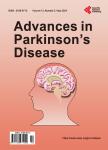Body Balance and Core Training in Parkinson’s Disease: A Longitudinal Crossover Study
Body Balance and Core Training in Parkinson’s Disease: A Longitudinal Crossover Study作者机构:Adapted Training and Performance Laboratory University of Turin Turin Italy University School of Physiotherapist European University of Madrid Madrid Spain Department of Clinical and Biological Sciences University of Turin Turin Italy Physical Capacity & Wellness Research Center CRAMB ISEF Turin Italy Perfomance & Wellness Research Center CRPB Turin Italy Department of Medical Sciences University of Turin Turin Italy
出 版 物:《Advances in Parkinson's Disease》 (帕金森(英文))
年 卷 期:2017年第6卷第4期
页 面:124-130页
学科分类:1002[医学-临床医学] 100214[医学-肿瘤学] 10[医学]
主 题:Parkinson’s Disease Exercises Body Balance Core Stability
摘 要:Objective: The objective of this study was to verify the effects of two different training protocols based on Core Stability and Body Balance exercises in subjects with Parkinsons’s Disease. Methods: Eight elderly men with PD (age of 73 ± 9 years, weight 69 ± 16 kg, height 164 ± 13 cm, 2 ± 1 of Disability Score according to Hoehn and Yahr scale). The disability score was evaluated using Hoehn and Yahr scale. This study was 12-month-long organized in 3 blocks of 4 months each. The sample was divided in two groups formed by 4 subjects each group. During the first four months, one group performed core stability exercises (CSG) while the other group exercised itself through a Balance Exercises Program (BG). After this first part of the study both protocols were stopped for the following 4 months. Finally, the group were reversed (counter balance design) for the last 4 months of physical activity. The two groups were measured twice, before (T0) and after the treatment (T1). Both treatments were designed in order to investigate the improvement in core muscles performance in order to grant a better balance control and to reduce the risk of falling. Results: statistically significant variations were found in the flight time of Sit-to-Stand (p 0.05, +27%) and in the step length (p 0.05, ?3%). In the CSG group, statistically significant variations were detected in Speed of Steps (p 0.05, +5%), Step Cadence (p 0.05, +3%), and Left Stride Duration (p 0.05, ?3%) (Table 1). Conclusion: Both Body Balance and Core training can be considered two good physical exercise methods for people with PD. This study highlights the positive effects of this training protocol on legs strength improvements and on the balance control while walking.



